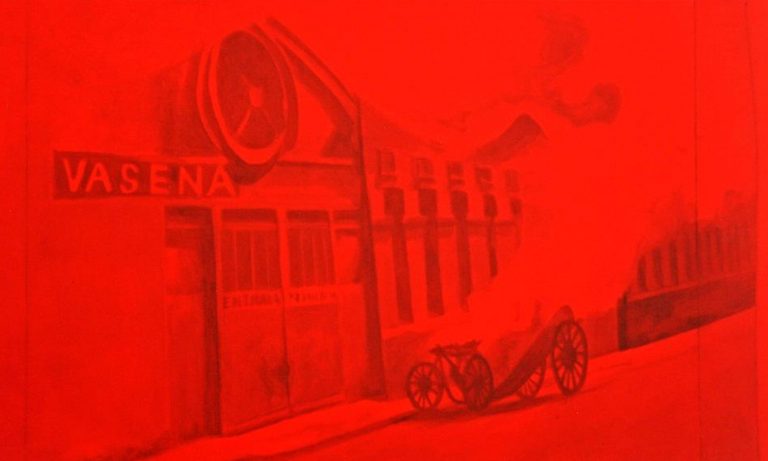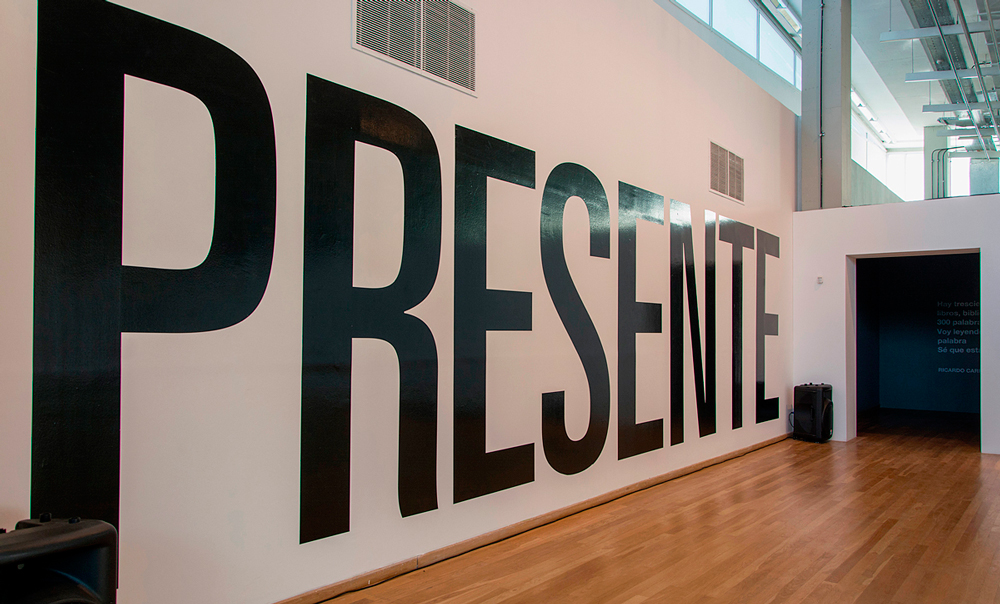IDENTIDAD
An exhibition of Parque de la Memoria and Abuelas de Plaza de Mayo
The Past Opened to the Future
Near the end of 1998, when the laws of impunity that prevented the prosecution of the authors of crimes against humanity during the last civic-military dictatorship were in force, the authorities of Centro Cultural Recoleta made a significant decision within the framework of their institutional policy: to give public visibility to the problem of the illegal appropriation of children during the dictatorship. The proposal was submitted to Abuelas de Plaza de Mayo (Grandmothers of Plaza de Mayo) who accepted and provided the fundamental information that the organization had been collecting since 1977. Thus the collaboration between both institutions was agreed upon and the work team was completed with a group of visual artists* who contributed their poetic vision and their commitment to the cause.
The resulting exhibition was entitled Identity and was held in the main halls of Centro Cultural Recoleta between November 1998 and January 1999. Its objective was to focus on the search for the grandchildren that Abuelas de Plaza de Mayo had been carrying out since October 1977. The visual strategy of placing a mirror between the photographs of men and women – fathers and mothers – who had disappeared and/or been murdered sought to evoke recognition of physical resemblance between them and their illegally appropriated children – young people who were then between nineteen and twenty-five years old (the same age as their parents when they disappeared). In this way, the physical similarity could, perhaps, be translated to kinship and these young people would recover their family history. The mirrors invoked the call of blood, but the mirrors also worked as a metaphor: anyone reflected in them was involved in the horror plot of disappearance and appropriation in some way, reinforcing the idea of the collective trauma that illegal appropriation caused throughout society.
Twenty-two years after the exhibition, Parque de la Memoria decided to reissue Identity with updated information available from Abuelas de Plaza de Mayo about the grandchildren that were appropriated. To date, one hundred and thirty cases have been solved out of the five hundred that the Grandmothers estimate in total. One hundred and thirty people have recovered their true identities thanks to the strength of love and the inexorable fight of these women who are a symbol all over the world, to the reopening of the trials for crimes against humanity and to the implementation of human rights policies.
Today, the objective remains the same: to locate the missing persons, to reconstruct the stories that are still obscured, to restore the identity of each one, to fulfill their rights to know who their fathers and mothers were and where they come from – not only the children themselves, but also their children. In 1998, when this exhibition first took place, the sought-after children were between nineteen and twenty-five years old, but today they are between forty-one and forty-seven, and their children also have the right to know the truth. There are still hundreds of men and women who do not know that they are children of the disappeared. Their children – the Grandmothers’ great-grandchildren – don’t know their true identity either.
That the renewal of Identity is being carried out in the PAyS Gallery of the Parque de la Memoria makes the dialogue between it and the Monument to the Victims of State Terrorism unavoidable. Although the Monument resignifies all the exhibitions housed in the PAyS Gallery, the fact that many of its plaques indicate the disappearance of pregnant women gives this dialogue a special symbolic weight.
Thus, this updated version of Identity is accompanied by an audiovisual which collects various testimonies and archival material about the work of Abuelas de Plaza de Mayo and the launch of the El Parque por la Identidad (The Park for Identity) campaign, which will call on those who have doubts through social networks to exercise their right to identity: the right of everyone to be themselves.
An artistic project by: Carlos Alonso, Nora Aslan, Mireya Baglietto, Remo Bianchedi, León Ferrari, Rosana Fuertes, Daniel Ontiveros, Carlos Gorriarena, Adolfo Nigro, Luis Felipe Noé, Marcia Schvartz, Juan Carlos Romero y Diana Dowek.
Parque de la Memoria – Monumento a las Víctimas del Terrorismo de Estado
An artistic project by:
Carlos Alonso
Nora Aslan
Mireya Baglietto
Remo Bianchedi
León Ferrari
Rosana Fuertes
Daniel Ontiveros
Carlos Gorriarena
Adolfo Nigro
Luis Felipe Noé
Marcia Schvartz
Juan Carlos Romero
Diana Dowek.




